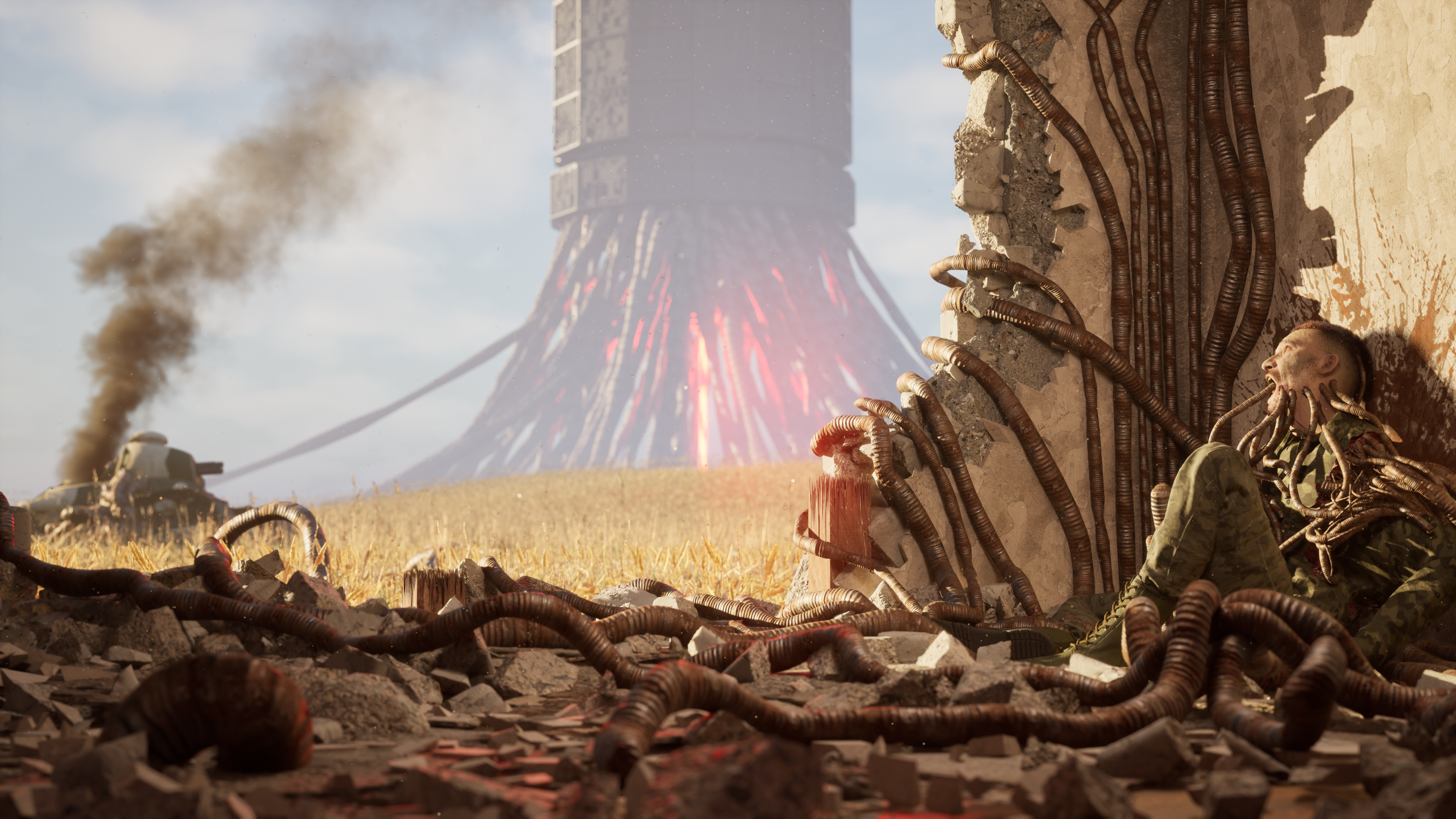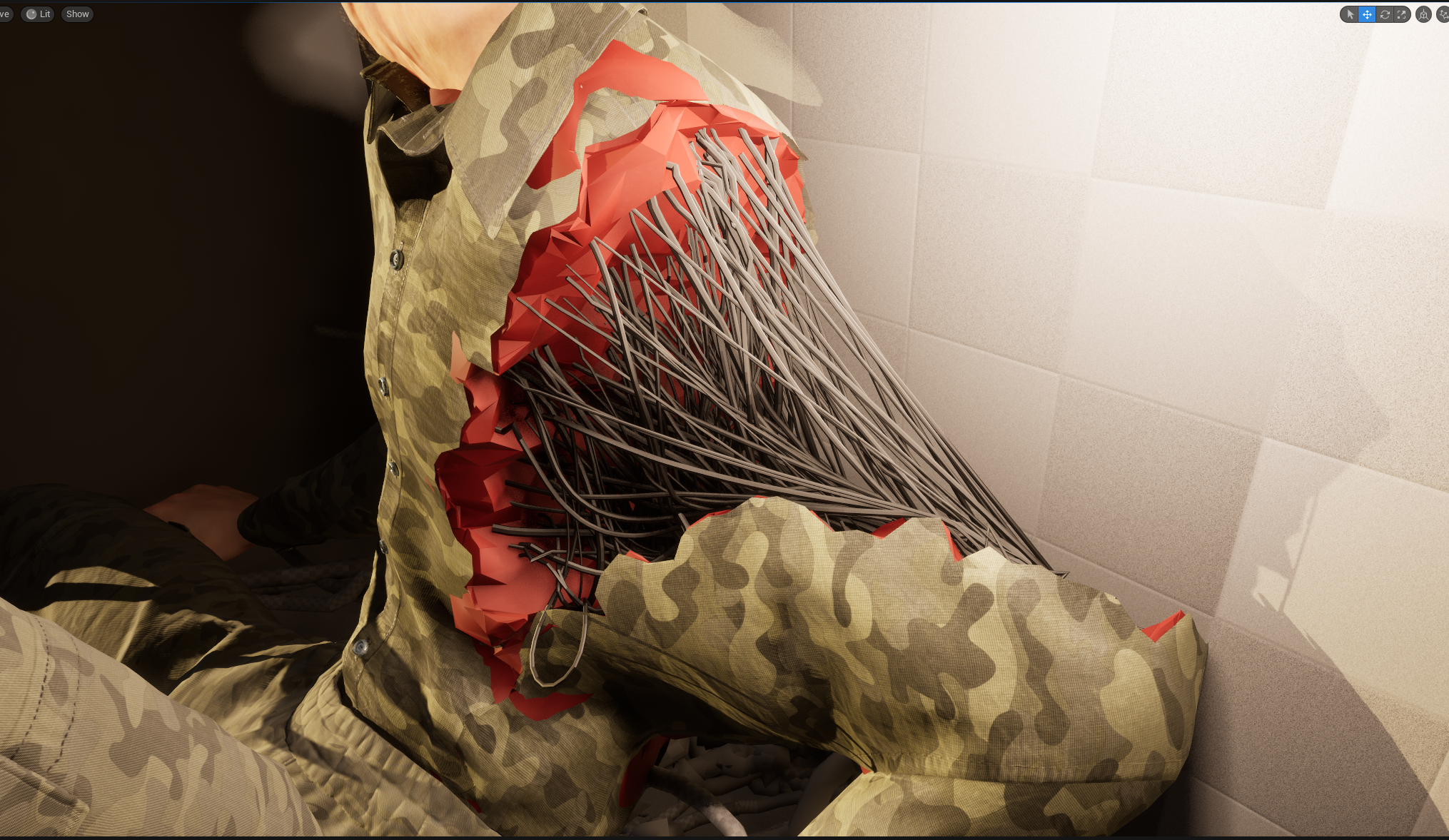I’m writing this blog post to break down how I created this Unreal Engine project, for my own record keeping, and for anyone else interested:
I recently took an Unreal Engine course at Gnomon, taught by Eric Roin and had a good time with it. There was a single assignment for the 10 week course which was to construct a scene in Unreal Engine from a piece of concept art found online. The course covered blocking, materials, lighting, animations in the sequencer among much much more. I was looking forward to converting my animation industry knowledge to use in Unreal Engine..
My intention with the class was to use it as a motivator for working on the project I wanted to see completed, as well as use it as a resource for asking questions and getting reviews on my project.
At the start, I reached out to a close friend of mine, Ryan Barry of 9monkeys Fame, and began discussing my ideas for the project I wanted to make during the course. I wholly trust his sense of design and wanted his input during the process.
I has this idea for a WW1 era scene, where instead of a global human to human conflict, the primary war had been against this technology virus that took over the earth and the creatures within it. I had ideas of many gears and wires interweaving WW1 era French countryside.
I slapped together a really crappy photoshop photobash of a zombie, ripped apart by gears, in a blown out building, with some sort of huge wire thing in the background.
Obviously, this was pretty terrible. I brought this to Ryan, and he agreed to do a quick drawing for me, that much better brought the scene to life. This is the result of Ryan’s work, FAR better.
I additionally collected some reference from other video games, real life French building diagrams, photos from French countrysides and buildings, and other relevant reference:
This will all serve as the guide I use for the rest of the course.
The second week involved blocking out the scene. I used Houdini to generate the blockout for the background wires, and the Unreal Engine modelling toolkit and the French building blueprints to reconstruct a rough building, pretty much to scale.
Next, I used Houdini to create the first passes at a destroyed wall. I tried having multiple layers in the wall for different textural feeling. This is still early, and does get iterated on further later.
Next, using MetaHuman and a whole bunch of Houdini work, I build up an internal mesh for the Metahuman, split it, then generated the first pass at wires within the split.
Over the next few weeks, I worked on materials, an animated smoke volume, decals, updates to the wires, PCG wheat in the fields, the addition of a tank model I purchased online, improved debris, and I met with Ryan once more for guidance on improving the overall composition of the scene. He suggested some new wires, which are drawn in red below.
The final couple of weeks of the course involved further refining the work. I never liked how the wooden beams or wooden debris on the ground looked, so there was an effort to also improve or delete them entirely. I also felt something was missing from the background, so another meeting with Ryan yielded discussions of an alien megastructure in the background. All of this, I feel, really brought it to a conclusion of sorts.
We have the laser in the megastructure casting light, and there are Niagara particles in the air. Also throughout the project, I used the version control P4V for the first time. I’ve used other version control systems before, but this was my first with P4.
There is also an animated version, which has it’s own issues. The loop of the character animation and wires isn’t at all clean. This means when the character’s animation sequence loops, there is a very obvious jump. Besides this pretty major animation loop issue, I’m pretty happy with the results, and was satisfied turning it in as my final project for the course.
Thank you Ryan Barry for all the help with the composition of the scene, and for Eric Roin for the very informative and fun course.


















































